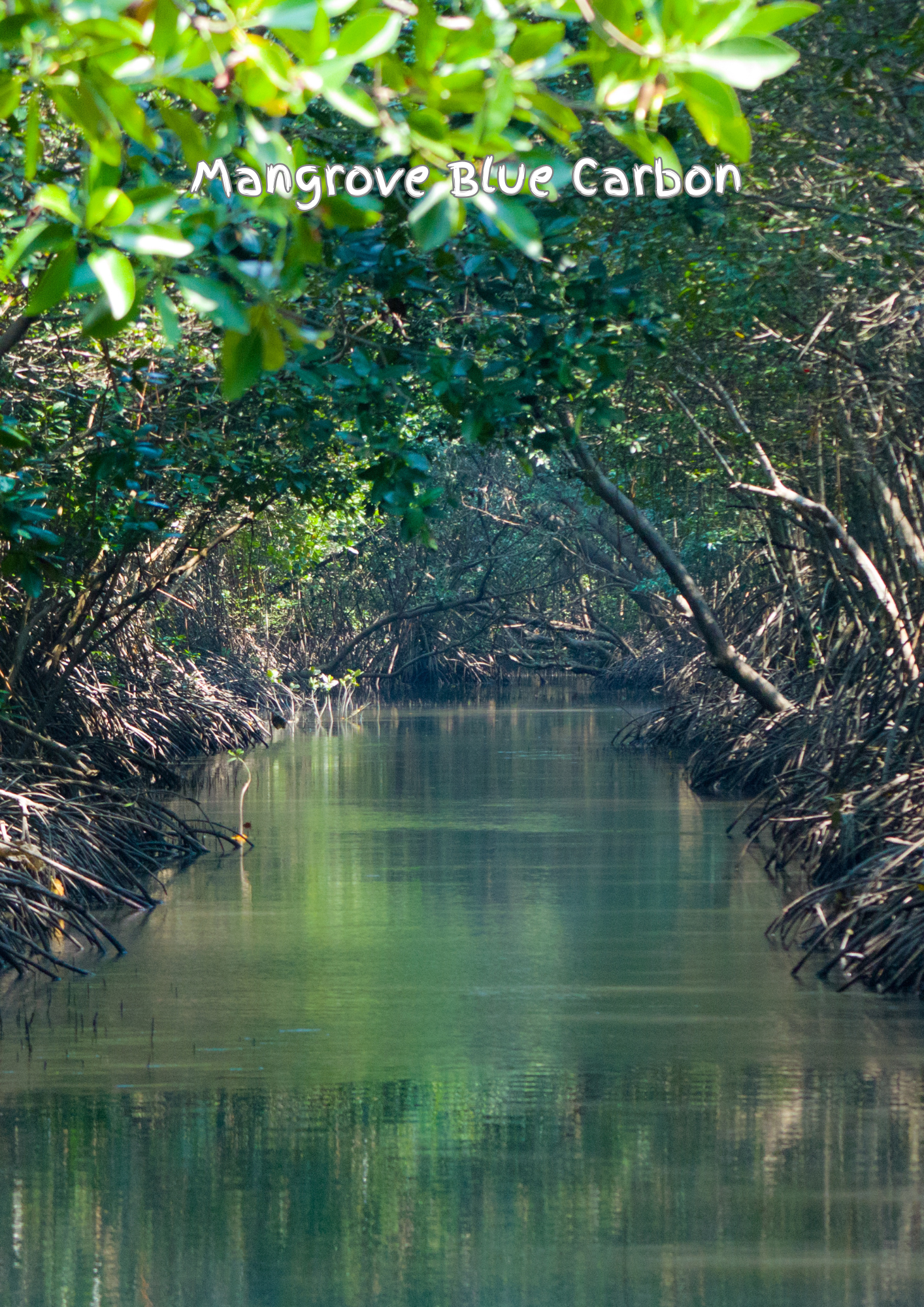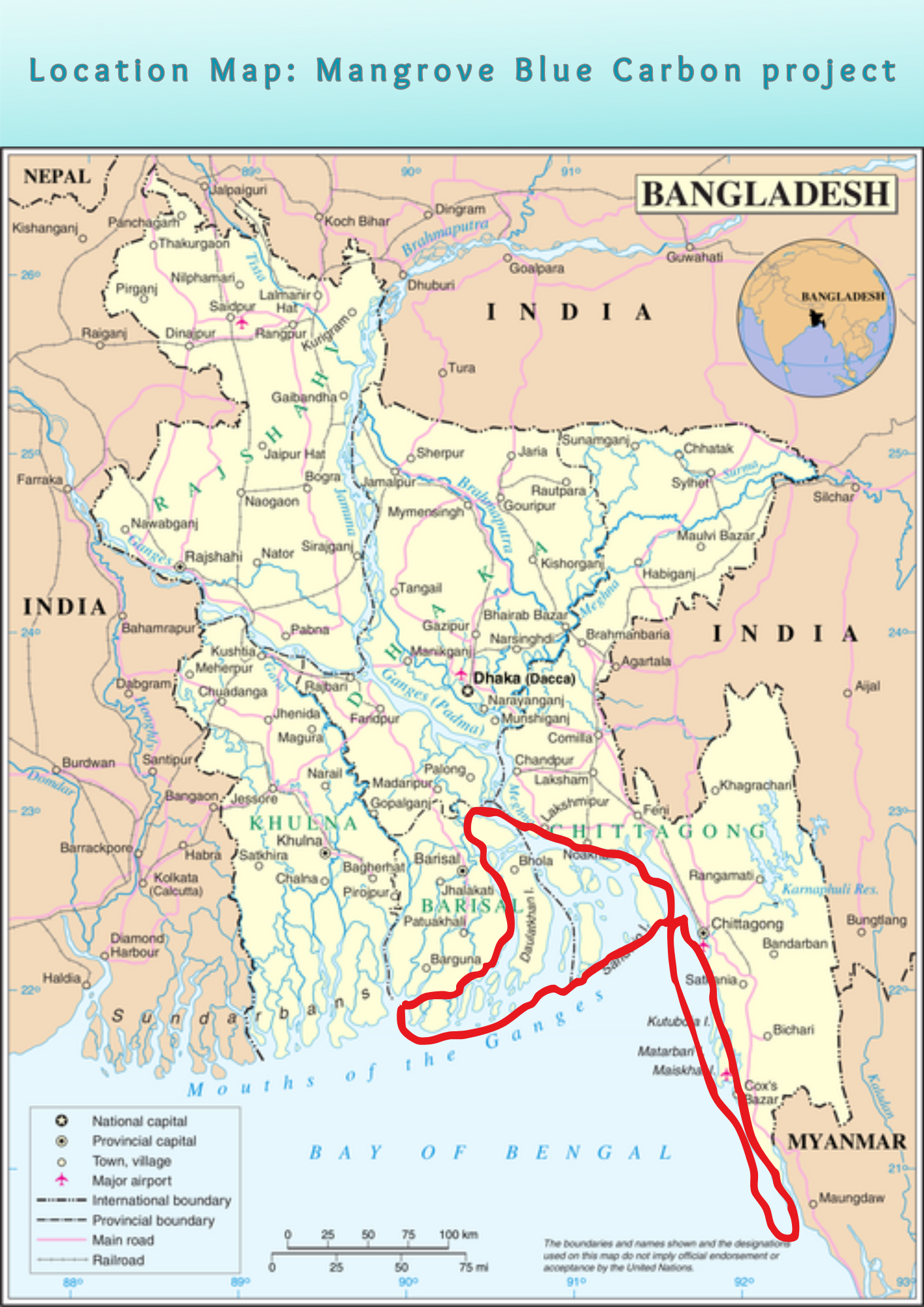Project Details

The chars and island areas adjacent to the Bay of Bengal
The overall objective of the project is to promote sustainable development and establish a resilient coastal greenbelt through large-scale coastal afforestation, contributing to significant greenhouse gas (GHG) sequestration. The specific objectives of the project are to: (i) Enhance carbon sequestration capacity; (ii) Restore and stabilize newly accreted coastal lands; (iii) Conserve and strengthen mangrove and aquatic ecosystems; (iv) Protect biodiversity and rehabilitate endangered or locally extinct species; (v) Reduce coastal disaster risks and enhance climate resilience; (vi) Create sustainable livelihood and development opportunities for coastal communities; and (vii) Generate and trade verified carbon credits in international markets.
Mangrove afforestation along the coastline of Bangladesh provides an invaluable nature-based solution for safeguarding coastal communities and livelihoods against cyclones, storm surges, and tsunamis. Beyond their protective function, mangroves play a crucial role in climate change mitigation by sequestering significant amounts of carbon dioxide. Their carbon absorption and storage capacity far exceeds that of most terrestrial forests, making them essential in combating climate change driven by greenhouse gas emissions such as carbon dioxide (CO₂), methane (CH₄), and nitrous oxide (N₂O).
The project has been designed and is being implemented in close collaboration with the Bangladesh Forest Department (BFD), aligning with the long-term climate and environmental vision of the Government of Bangladesh.
The project comprises four key components:
1. Afforestation: Establishment and restoration of mangrove forests in coastal and newly accreted lands.
2. Community Development: Enhancing the livelihoods and resilience of local coastal communities through participatory management.
3. Monitoring: Implementing robust systems for growth assessment, carbon measurement, and ecosystem health monitoring.
4. Carbon Credit Sales: Generating, certifying, and trading verified carbon credits in international markets to ensure long-term financial sustainability.
Project ID: TBD
Idea Generation & Pre Feasibility to Depelop Project Information Notes (PIN)
Project Idea Note (PIN) Development and Finalization
PIN Submitted to the GoB to Obtaint Letter of Intend (LoI)
LoI issued by GoB to Implement the Project
Investor Pitching to Obtain Required Investment
Project Document (PD) Development
The project will generate a range of tangible benefits for local communities as well as for the environment.
Community Benefits
Environmental Benefits
The chars and island areas adjacent to the Bay of Bengal present exceptionally high potential for mangrove-based carbon projects due to rapid land accretion and their high exposure to climatic hazards. These emerging landforms, such as those in Bhola and the Noakhali belt, are dynamic and highly vulnerable to erosion and cyclonic events. Strategic afforestation in these areas not only enhances risk reduction and shoreline stabilization but also creates significant new carbon sinks.
Blue-carbon ecosystems, particularly mangroves, offer distinct advantages. They store substantial quantities of soil organic carbon and accumulate biomass at a much faster rate than most terrestrial forests. In fact, mangrove ecosystems can sequester up to ten times more carbon than typical upland forests, making them a critical component in climate change mitigation strategies.



House - 92, Road-05, Block-D,
Basundhara Residential Area, Baridhara,
Dhaka-1212, Bangladesh
House-37, Road-11, Block-H
Banani, Dhaka-1213 Bangladesh